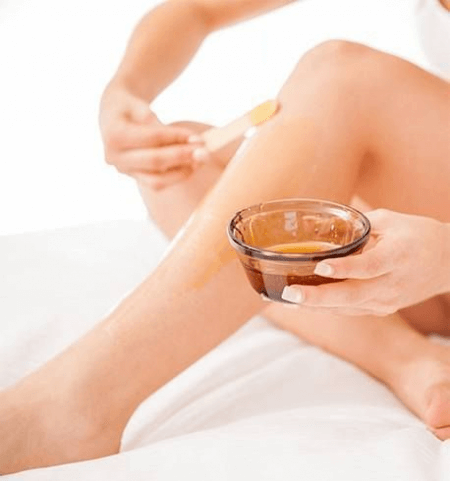In the beauty industry, hot wax and soft wax are terms that are often used interchangeably. But even though they serve the same purpose, they differ in a number of ways.
This article will explain the differences between the two.
Summary Table
| Hard Wax | Soft Wax |
| Strip-less waxing | Stripped waxing |
| Thicker amounts are applied to the skin | Thinner amounts are applied to the skin |
| Ideal for thinner, finer hair | Less ideal for thinner, finer hair |
| Ideal for waxing the bikini line, eyebrows, underarms, upper lip, and facial areas | Ideal for waxing the arms, chest, back, and legs |
| Does not leave a sticky residue | Leaves a sticky residue |
Definitions

As one of the most popular forms of hair removal, hard wax is a peel-off wax ideally applied on sensitive areas. Formulated to remove shorter hair strands from the roots, hard wax is thick in consistency. Known as strip-less wax, hard wax is typically applied with the use of a spatula. Once it hardens, it is pulled off to remove unwanted hair. Since it attaches directly to the hair strands, it efficiently lessens discomfort and irritation.

Soft wax, on the other hand, is popularly known as “strip waxing.” A semi-permanent hair removal technique ideal for larger areas, soft wax is spread evenly over the skin. Then, a paper strip or a cloth is pressed into the area. Once the strip adheres to the skin, it is quickly peeled off, removing unwanted hair. To avoid trauma and discomfort, the strip should be pulled against the direction of hair growth.
Hard Wax vs Soft Wax
So what’s the difference between hard wax and soft wax?
Firstly, hard wax is strip-less, whereas soft wax is a strip waxing technique.
While hard wax is performed without cloth, paper, or muslin strips, soft wax removes hair by the use of any of these waxing strips.
In terms of application, a thicker amount of hard wax should be applied to the skin for the honey-like formula to effectively attach to the hair shaft and harden. Meanwhile, soft wax should be thinly applied to the skin.
Unlike soft wax, hard wax does not adhere to the skin.
Instead, it attaches to the hair strands. As hard wax hardens, it encapsulates into individual hair strands, making it perfect for removing thin, fine hair.
Because of this working mechanism, hard wax is less painful than soft wax, making it more ideal for waxing sensitive areas including the bikini line, eyebrows, underarms, upper lip, and facial areas. Also, it should be applied in smaller areas because it can easily break. Soft wax, on the other hand, is more efficient in waxing larger areas such as the arms, chest, back, and legs.
Lastly, soft wax is stickier than hard wax. Unlike soft wax, hard wax does not leave any sticky residue after waxing.
To remove soft wax residue, experts recommend oil application on the waxed areas.





